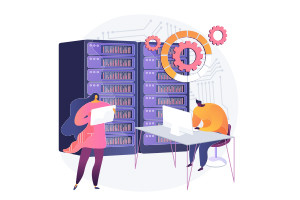In 2022, businesses will emphasize enterprises' database management practices. As more applications get developed, many companies are opting for database administrators (DBAs). This database-as-a-service promises to be great for managing and enhancing the databases' performance, protection, stability and scalability. However, database developers are still responsible for ensuring corporations have suitable tools to manage powerful databases in this technological world. MongoDB is among the top five most-used DBs for online applications as a NoSQL database management software. It is a viable database administration program due to its small size, portability and cross-platform compatibility. Yet, its design ideas are unique from those of conventional relational systems. This course will help you understand the principles of the MongoDB framework while sharing essential techniques for managing the data in your databases.
Build online application databases utilizing JSON-like documents rather than table and row structures. Here you will learn how records are created in MongoDB and understand the succession of key/value pairs of diverse forms, such as arrays and nested documents. Due to its lack of rigidity, this technique is especially well-suited for developers. It is free to start using, easy to set up on Linux and Windows and supports various programming languages like Java and Python. With the help of your tutor, Brett Hooper, you will learn, comprehend and review a practical project to deploy a web app database using MongoDB. His IT experience spans decades and includes big banks, insurance businesses and IT enterprises. This course will introduce the integrated development environment used to write database programming. You'll learn how a MongoDB database keeps its data in collections and how to create, read, update and remove records, rows and tables. Compared to typical relational databases, MongoDB has several distinct features, such as a developer data platform that is entirely cloud-based.
By the end of this course, you will have built a comprehensive, functional web app connected to MongoDB programming with the Codeanywhere IDE. Additionally, you will have the confidence, knowledge and expertise to begin working on your projects immediately. This course is for backend developers, web designers, web architects, testers, site administrators and essentially anybody with a basic understanding of web development. Nevertheless, this training is not restricted to developers only! The objective is to provide a firm foundation to get you started developing web apps using MongoDB by grasping its strengths, usefulness and limitations. Throughout the last module, you will use practical examples of the primary commands to understand the software by learning to configure, operate, import data and create new databases. You will familiarise yourself with query language commands and delve into one of MongoDB's most potent capabilities, the aggregation framework. As a database administrator, you may remotely administer the software to store data and check for flaws or problems with the company's databases. Keep in mind that, according to the Bureau of Labor and Statistics (BLS), cloud service companies will hire 26% more DBAs by 2024. What's stopping you from starting your database administrator career? Enroll now!
What You Will Learn In This Free Course
View All Learning Outcomes View Less All Alison courses are free to enrol, study, and complete. To successfully complete this Certificate course and become an Alison Graduate, you need to achieve 80% or higher in each course assessment.
Once you have completed this Certificate course, you have the option to acquire an official Certificate, which is a great way to share your achievement with the world.
Your Alison certificate is:
- Ideal for sharing with potential employers.
- Great for your CV, professional social media profiles, and job applications.
- An indication of your commitment to continuously learn, upskill, and achieve high results.
- An incentive for you to continue empowering yourself through lifelong learning.
Alison offers 2 types of Certificate for completed Certificate courses:
- Digital Certificate: a downloadable Certificate in PDF format immediately available to you when you complete your purchase.
- Physical Certificate: a physical version of your officially branded and security-marked Certificate
All Certificate are available to purchase through the Alison Shop. For more information on purchasing Alison Certificate, please visit our FAQs. If you decide not to purchase your Alison Certificate, you can still demonstrate your achievement by sharing your Learner Record or Learner Achievement Verification, both of which are accessible from your Account Settings.
















 Avg. Hours
Avg. Hours  Contains Video
Contains Video  CPD Accredited
CPD Accredited 
 Total XP:
Total XP: 
 Knowledge & Skills You Will Learn
Knowledge & Skills You Will Learn 


